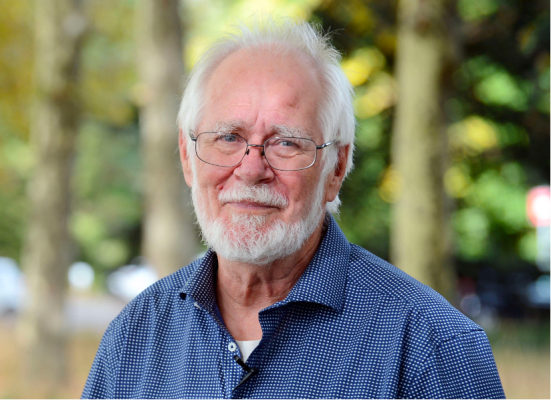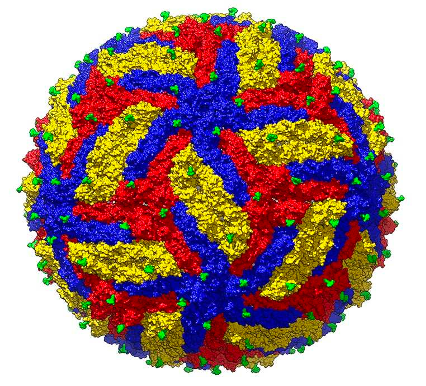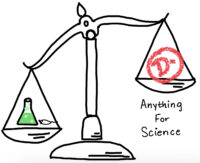
By Shivani Manikandan
It might be hard to believe that a dyslexic student who nearly failed high school and was even a college dropout is now a Nobel prize-winner in chemistry, but this is exactly the life story of Dr. Jacques Dubochet (2).
Dubochet is a Swiss biophysicist who won the Nobel Prize in Chemistry in 2017. His groundbreaking research in cryogenic-electron microscopy (Cryo-EM) has revolutionized the field of structural biology, allowing scientists to visualize the structures of biological molecules in unprecedented detail (1).
Despite his many achievements, Dubochet’s academic journey was not always easy. He struggled with dyslexia as a child, which made reading and writing a challenge (2). Throughout his schooling years, Dubochet did not get good grades and nearly failed high school. His academics were so poor that he had to receive special permission to advance through his coursework and not be held back. This continued into his college years, and Dubochet says that at times dyslexia fueled his laziness and allowed him to not put in the effort he should have. Fortunately, he had very supportive parents that pushed him to excel in other areas, and teachers that believed in his abilities despite his poor grades. However, after his second year, Dubochet was dismissed from college for his failing grades, and took on some temporary jobs before returning to college and getting a PhD (1).
Dubochet describes his approach to life as follows, “The need for understanding is my way of finding my way in life”, and this was exactly his approach to his career as well (1). His pathway to obtaining a PhD and studying biology was also unconventional. Hoping to fulfill the need to better understand the world around him, Dubochet first earned a diploma in physics. However, he was later influenced by prominent discoveries of the time by researchers like Watson and Crick and wanted to solve biological problems under the framework of physics. In order to do so, he worked to obtain a PhD in Biology and became a biophysicist.
This ultimately led to one of his greatest contributions to the field of biology. Dubochet, along with Joachim Frank and Richard Henderson, was awarded the Nobel Prize for Chemistry for their discovery of Cryo-EM. Specifically, Dubochet’s contribution to this finding was centered around a process called vitrification (4). At the time of his discovery, it was difficult to understand the molecular structure of biological compounds. Most studies related to this had to be conducted with the help of X-ray Crystallography, a process that requires the biomolecule to be frozen down to crystals. However, this was problematic as it was not always possible to force biomolecules into a crystalline structure. This is where Dubochet comes in. Vitrification is a process of rapid cooling that allows one to preserve the structure of a biomolecule and allows for observation of the structure in solution, without crystallization (4). This method, in combination with Henderson’s discovery that samples can be understood by their interaction with a beam of electrons and Frank’s analysis of this data, allowed for Cryo-EM. This made a large impact on the scientific community (7). Specifically, it allowed for a broader range of molecules to be visualized and enabled the pharmaceutical industry to customize drugs to be able to bind to the specific shapes of molecules (3).
In the real world, it made a large impact on the development of many medications, notably the vaccine for the Zika Virus (3, 6). During a time when there was overwhelming spread of the Zika Virus, the Cryo-EM structure discovery of the virus was crucial in progressing the development of the vaccine, because it helped scientists visualize the changes of virus as it develops over the course of its life cycle, which provided important insight into how to stop the virus life cycle (3, 6). In addition to the Zika Virus, Cryo-EM also helped scientists understand the respiratory syncytial virus, SARS-CoV-2, and other proteins important to the progression of cancer (7). The applications of Cryo-EM are immense, and it’s especially remarkable considering the atypical path that led Dubochet to help make this discovery.
At the University of Iowa, the departments of Biophysics and Biochemistry are applying Dubochet’s discovery, Cryo-EM, in a variety of ways to help solve problems in biology. Specifically, some experts are studying the role of a specific transcription factor’s structure in binding to different areas of the genome and regulating gene expression. Others are studying the role of specific protein structure in relation to muscular dystrophy and potential ways to combat it (8, 9).

In terms of studying transcription factors, experts hope to better understand what change in the transcription factor, the Glucocorticoid Receptor, causes it to bind to a specific region of the genome over another. Additionally, they hope to better understand the role of glucocorticoid receptors in the treatment of acute lymphoblastic leukemia. They hope to explore these questions by looking at the structures of the molecules involved (8).
With regards to muscular dystrophy, changes to a specific protein complex called dystrophin-glycoprotein can affect the type of dystrophy a person has. Experts are working to uncover how changes to the structure of this complex can affect the way it interacts with its surroundings and its overall function. This information could provide insight into possible treatment options for this disease. The structural study of such a project relies on methods like Cryo-EM (9).
Even though Dubochet’s journey to the scientific field was unconventional, he was able to make such a large impact on the way we see the biomolecules within us. Dubochet serves as a reminder that no student should be judged solely by their grades or their ability to conform to conventional standards of intelligence, and that a true scientist is defined not by their career path but by their curiosity, perseverance, and willingness to learn.
Links to research groups in the University of Iowa:
The information for this article was obtained from the following sources:
1) https://www.nobelprize.org/prizes/chemistry/2017/dubochet/biographical/
2) https://www.thelocal.ch/20171006/i-was-very-bad-in-school-swiss-nobel-prize-in-chemistry-2017-winner
4) https://www.chemistryworld.com/features/cryo-em-a-cold-hard-look-at-biology/3008131.article
5) https://www.biozentrum.unibas.ch/news/detail/mini-symposium-with-nobel-laureate-jacques-dubochet
6) https://www.pnas.org/doi/10.1073/pnas.1609721113
7) https://pubs.acs.org/doi/10.1021/acscentsci.0c01048
8) https://medicine.uiowa.edu/biochemistry-molecular-biology/profile/miles-pufall
9) https://medicine.uiowa.edu/physiology/profile/kevin-campbell

